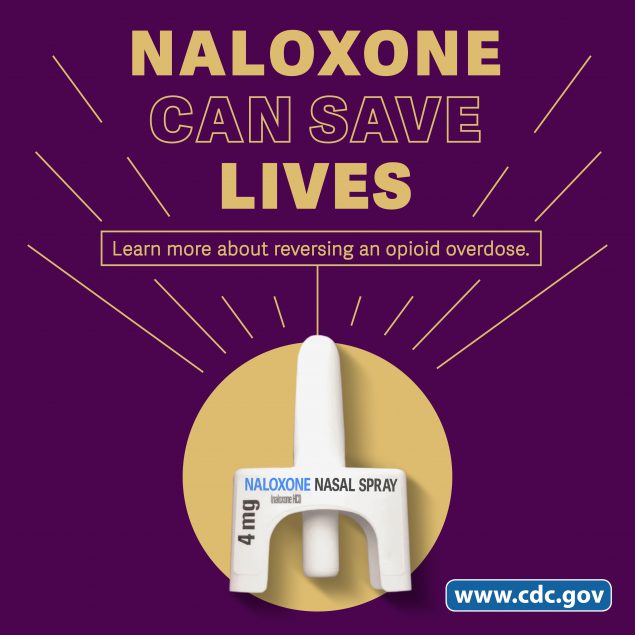A Time to Remember and Take Action
International Overdose Awareness Day

Prevention and Remembrance
August 31 marks International Overdose Awareness Day every year. On this day, we remember and grieve those we’ve lost and strengthen our resolve to end overdose injuries and deaths.
In 2020, 91,799 drug overdose deaths occurred in the United States. Against the backdrop of the COVID-19 pandemic, disruption in access to prevention, treatment, harm reduction, and recovery support services has likely contributed to the increase in overdose deaths.
Individuals treated by emergency medical services (EMS) for opioid-involved overdoses are increasingly refusing transport to emergency departments. EMS and other first responders play an important role in responding to the overdose crisis, not only by providing immediate care, but also by sharing EMS data with public health partners. Relying on emergency department (ED) data alone can underestimate the true burden of nonfatal opioid-involved overdoses.
Nonfatal opioid-involved overdoses have increased
EMS data allows for near-real-time trend analysis and complements emergency department (ED) data, both of which can inform public health response and prevention efforts.
CDC analyzed EMS data from 491 counties in 21 states during January 2018 to March 2022. During this period, the rate of EMS encounters for nonfatal opioid-involved overdoses increased, on average, 4% quarterly. The highest rates were among people who were:
- Ages 25-34 years
- Male
- Non-Hispanic White and non-Hispanic Native Hawaiian/Other Pacific Islander
By county, the EMS data showed highest rates among urban counties and counties with higher unemployment rates.
Learn more about the disparities among nonfatal opioid-involved overdose rates, by patient and county characteristics: https://www.cdc.gov/mmwr/volumes/71/wr/mm7134a1.htm
This analysis of nonfatal opioid-involved overdose trends in EMS data highlights the need for increased and equitable access to treatment (such as medications for opioid use disorder [MOUD]), harm reduction and behavioral health services, and post-overdose response protocols among all populations.
This analysis also shows patient- and county-level characteristics associated with increased risk for overdose. Focused outreach, including addressing barriers to care, to communities disproportionately affected by overdose, such as racial and ethnic minority communities and those with higher unemployment rates, could help to reduce overdose morbidity and mortality.
Everyone can play a role. Talk to your doctor if you or someone close to you needs help for substance use.

- Learn about naloxone, a lifesaving drug that can reverse the effects of an opioid overdose when administered in time.
- Ask your doctor or pharmacist for a naloxone prescription or get naloxone from local organizations if you or a loved one uses illicit drugs, has substance use disorder, takes high-dose prescription opioids, or has other risk factors for opioid overdose.
- Read and share resources about overdose prevention and raise awareness about the communities that are disproportionately impacted by overdose.
- Learn more about reducing stigma which can be a major barrier to getting help.
If you know of someone using opioids or other substances, recognizing the signs of opioid overdose can save a life. Here are some things to look for:
- Small, constricted “pinpoint pupils”
- Falling asleep or losing consciousness
- Slow, weak, or no breathing
- Choking or gurgling sounds
- Limp body
- Cold and/or clammy skin
- Discolored skin (especially in lips and nails)
- Call 911 Immediately.
- Administer naloxone, if available.
- Try to keep the person awake and breathing.
- Lay the person on their side to prevent choking.
- Stay with the person until emergency assistance arrives.
- Morbidity and Mortality Weekly Report (MMWR): Patient- and county-level trends in nonfatal opioid-involved overdose emergency medical services encounters, 491 counties in 21 states, Q1 2018–Q1 2022
- SUDORS COVID-19 Data Brief: A qualitative assessment of circumstances surrounding drug overdose deaths during early stages of the COVID-19 pandemic
- Stop Overdose: Life-saving Naloxone
- Stop Overdose: Recovery & Stigma Reduction
- Recovery Is Possible | Rx Awareness | CDC Injury Center
- Naloxone Factsheets
- Rx Awareness | CDC Injury Center
- COVID-19 Information, Support, and Resources for People at Risk | CDC
- Mental Health and Coping During COVID-19 | CDC
- Medication-Assisted Treatment (MAT) | SAMHSA
- Health Equity | Drug Overdose | CDC Injury Center
- Drug Overdose Deaths Rise, Disparities Widen | VitalSigns | CDC
- Life-Saving Naloxone from Pharmacies | VitalSigns | CDC

